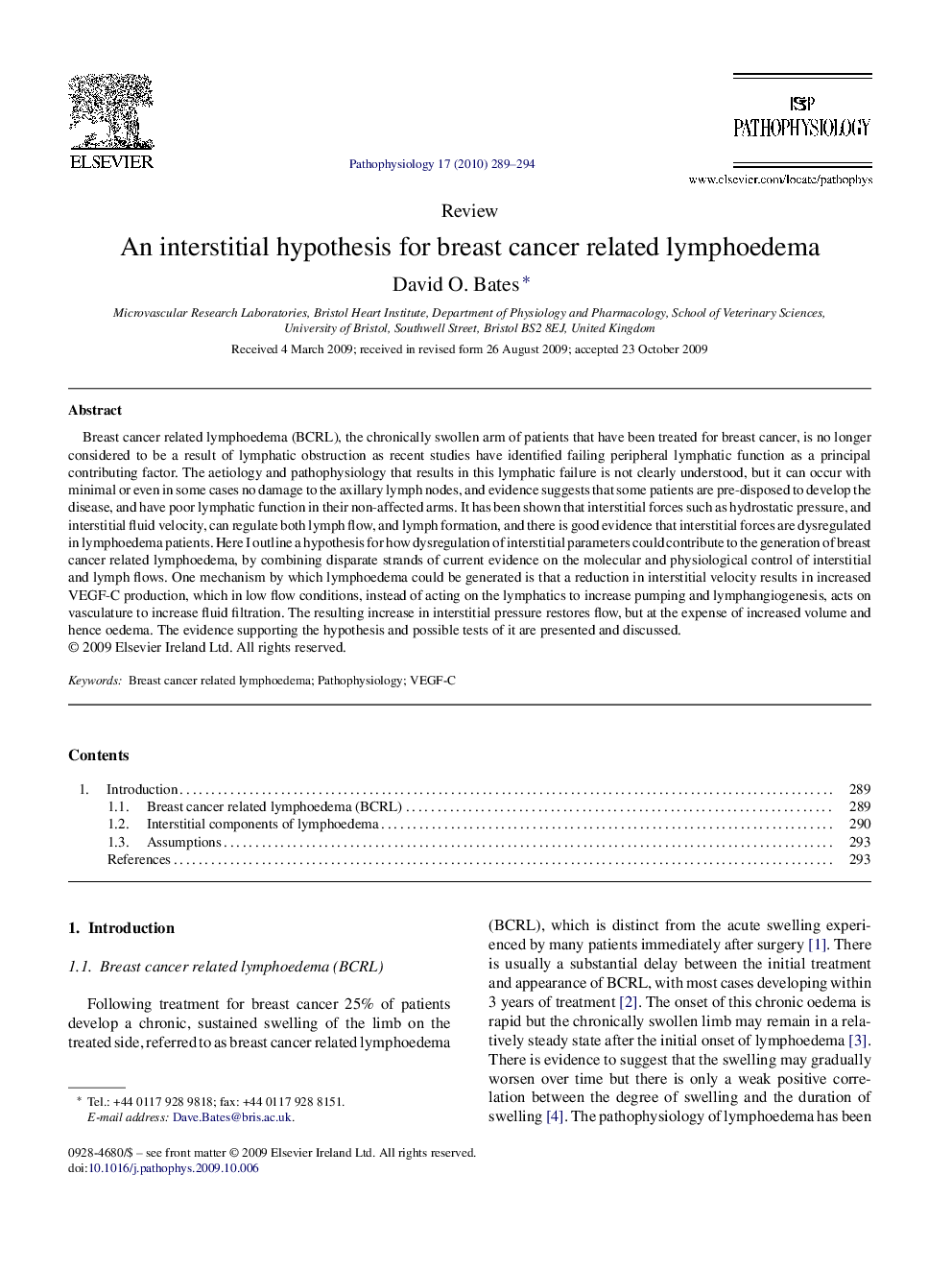| Article ID | Journal | Published Year | Pages | File Type |
|---|---|---|---|---|
| 4137332 | Pathophysiology | 2010 | 6 Pages |
Breast cancer related lymphoedema (BCRL), the chronically swollen arm of patients that have been treated for breast cancer, is no longer considered to be a result of lymphatic obstruction as recent studies have identified failing peripheral lymphatic function as a principal contributing factor. The aetiology and pathophysiology that results in this lymphatic failure is not clearly understood, but it can occur with minimal or even in some cases no damage to the axillary lymph nodes, and evidence suggests that some patients are pre-disposed to develop the disease, and have poor lymphatic function in their non-affected arms. It has been shown that interstitial forces such as hydrostatic pressure, and interstitial fluid velocity, can regulate both lymph flow, and lymph formation, and there is good evidence that interstitial forces are dysregulated in lymphoedema patients. Here I outline a hypothesis for how dysregulation of interstitial parameters could contribute to the generation of breast cancer related lymphoedema, by combining disparate strands of current evidence on the molecular and physiological control of interstitial and lymph flows. One mechanism by which lymphoedema could be generated is that a reduction in interstitial velocity results in increased VEGF-C production, which in low flow conditions, instead of acting on the lymphatics to increase pumping and lymphangiogenesis, acts on vasculature to increase fluid filtration. The resulting increase in interstitial pressure restores flow, but at the expense of increased volume and hence oedema. The evidence supporting the hypothesis and possible tests of it are presented and discussed.
